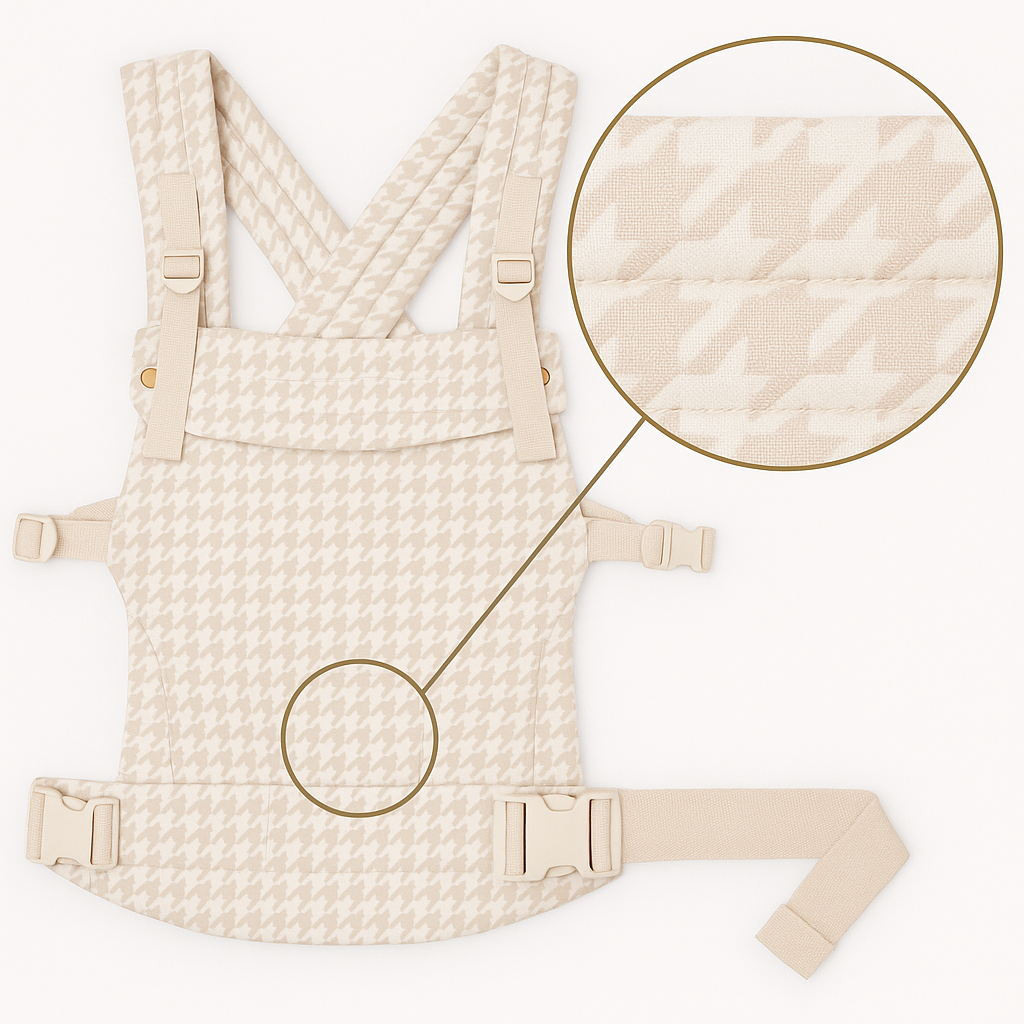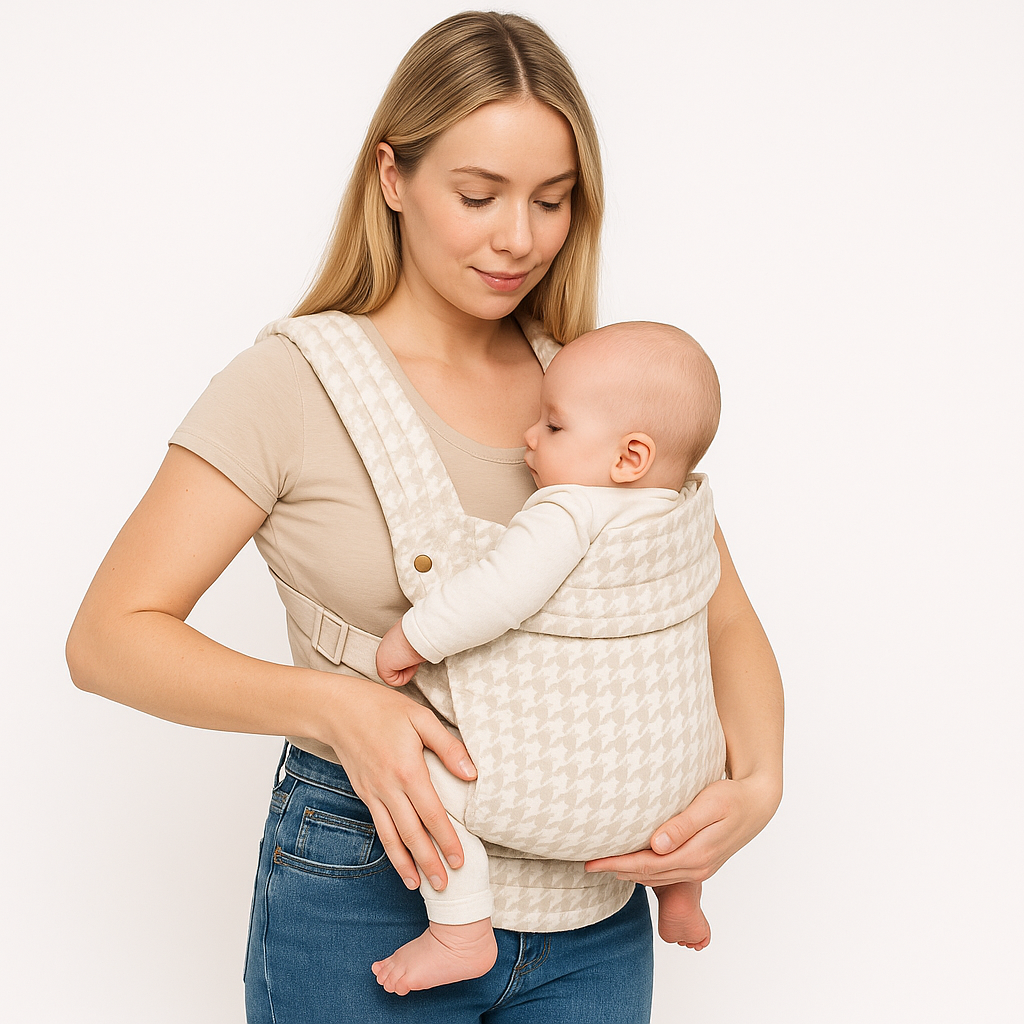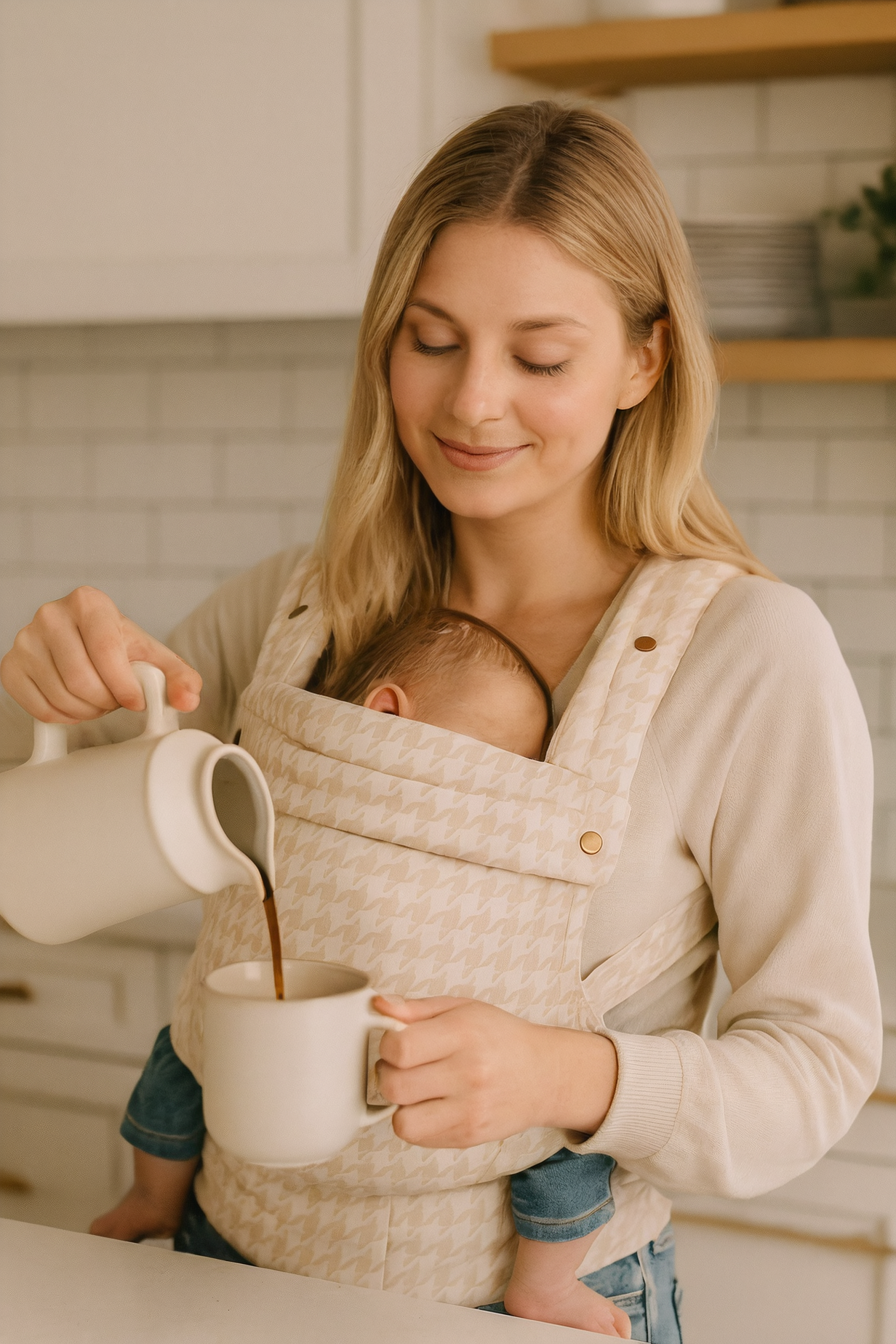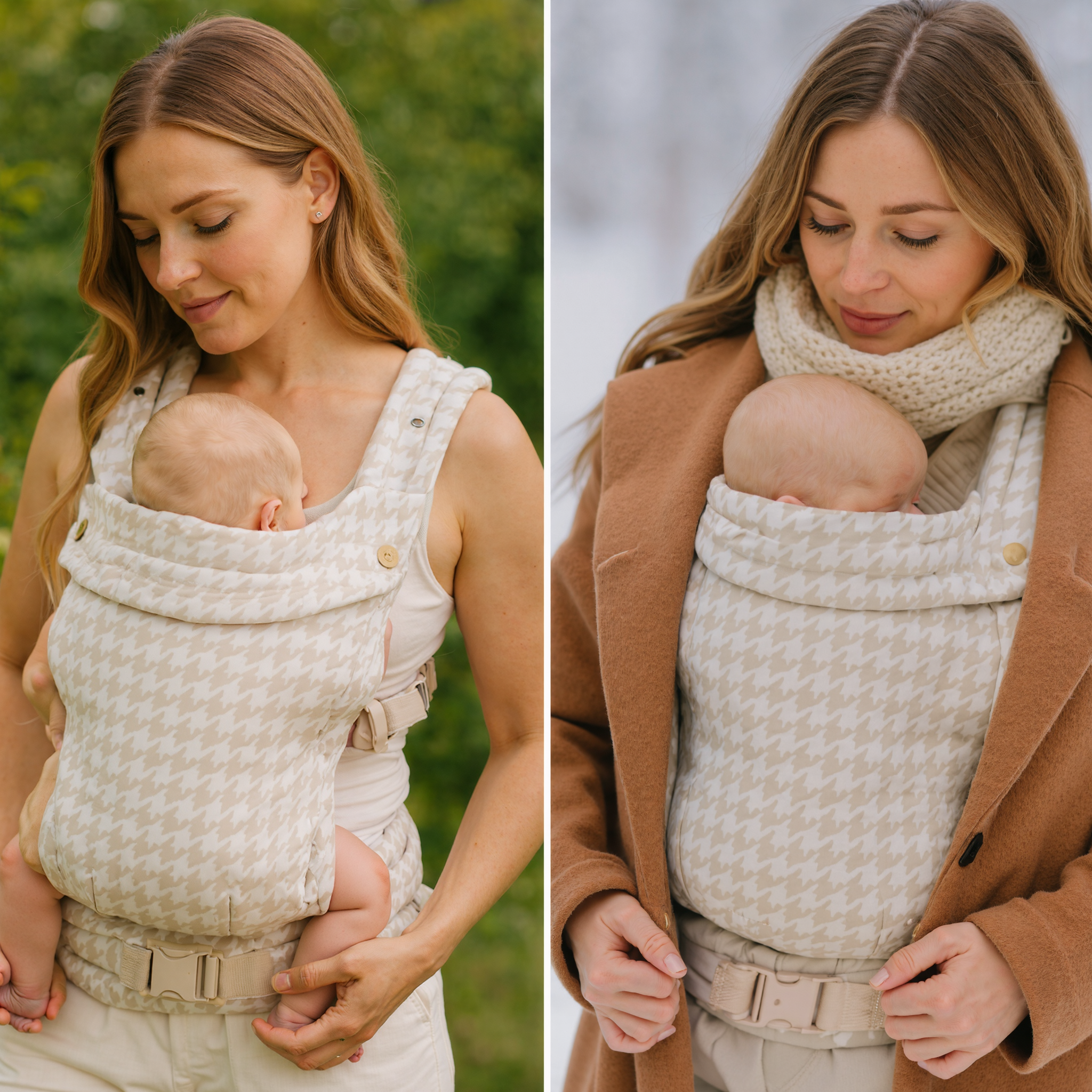How to Wear Your Amari Bonding Carrier

Always check your carrier before each use: look for frays, loose stitching, or worn buckles. Do not use the carrier if you see any damage.
Remember the T.I.C.K.S. rules for safe babywearing:
- Tight – the carrier should hold your baby snug against you.
- In view – you should always be able to see your baby’s face.
- Close enough to kiss – your baby’s head should be high on your chest.
- Keep chin off chest – make sure there’s space under your baby’s chin.
Supported back – your baby’s back should be straight and well supported.
Always check your carrier before each use: look for frays, loose stitching, or worn buckles. Do not use the carrier if you see any damage.
Remember the T.I.C.K.S. rules for safe babywearing:
- Tight – the carrier should hold your baby snug against you.
- In view – you should always be able to see your baby’s face.
- Close enough to kiss – your baby’s head should be high on your chest.
- Keep chin off chest – make sure there’s space under your baby’s chin.
Supported back – your baby’s back should be straight and well supported.


📹Step-by-step videos will be available soon to guide you through each carry style.
Step 1: Prepare the carrier
Slip your arms through the shoulder straps and pull the waistband snug around your waist, positioning the panel high on your torso.
Step 2: Place your baby (Facing-in position)
Lift your baby gently into the carrier, making sure they are seated in the ergonomic “M-position” (knees higher than bottom, hips supported).
Step 3: Adjust height & head support
Your baby should sit high enough on your chest that you can easily kiss the top of their head. Always keep your baby’s chin away from their chest.
Step 4: Support hips & back
Check that your baby’s hips are spread in the “froggy M-position” and that their back has a natural C-shape with gentle support.
Step 5: Secure and tighten
Tighten the straps evenly. Roll your shoulders back and check that your baby is snug, supported, and comfortable.
📹Step-by-step videos will be available soon to guide you through each carry style.
Step 1: Prepare the carrier
Slip your arms through the shoulder straps and pull the waistband snug around your waist, positioning the panel high on your torso.
Step 2: Place your baby (Facing-in position)
Lift your baby gently into the carrier, making sure they are seated in the ergonomic “M-position” (knees higher than bottom, hips supported).
Step 3: Adjust height & head support
Your baby should sit high enough on your chest that you can easily kiss the top of their head. Always keep your baby’s chin away from their chest.
Step 4: Support hips & back
Check that your baby’s hips are spread in the “froggy M-position” and that their back has a natural C-shape with gentle support.
Step 5: Secure and tighten
Tighten the straps evenly. Roll your shoulders back and check that your baby is snug, supported, and comfortable.


Keep your baby visible and close enough to kiss at all times.
- Ensure your baby’s face is always clear and chin is never pressed into their chest.
- Avoid long continuous wear (take breaks every hour).
- Be mindful when doing household tasks – never cook, bend too low, or do unsafe activities with your baby in the carrier.
Keep your baby visible and close enough to kiss at all times.
- Ensure your baby’s face is always clear and chin is never pressed into their chest.
- Avoid long continuous wear (take breaks every hour).
- Be mindful when doing household tasks – never cook, bend too low, or do unsafe activities with your baby in the carrier.


Summer: Dress lightly, avoid overheating, choose breathable fabrics.
Winter: Wear a coat over yourself and the carrier, or use a babywearing jacket. Do not overdress your baby.
General: Check your baby’s temperature often – your body heat plus layers can be enough.
Summer: Dress lightly, avoid overheating, choose breathable fabrics.
Winter: Wear a coat over yourself and the carrier, or use a babywearing jacket. Do not overdress your baby.
General: Check your baby’s temperature often – your body heat plus layers can be enough.

Must Know
Can my baby sleep in the carrier?
Yes, but once your baby is deeply asleep, transfer them to a safe sleeping space. The carrier is not designed for long naps.
What if my baby cries even when seated correctly?
Check for other needs – hunger, diaper change, or temperature. Babywearing is soothing, but comfort basics come first.
What if I feel discomfort?
Make sure straps are tightened properly and weight is distributed evenly. Adjust your posture, and alternate carrying sessions with breaks.
